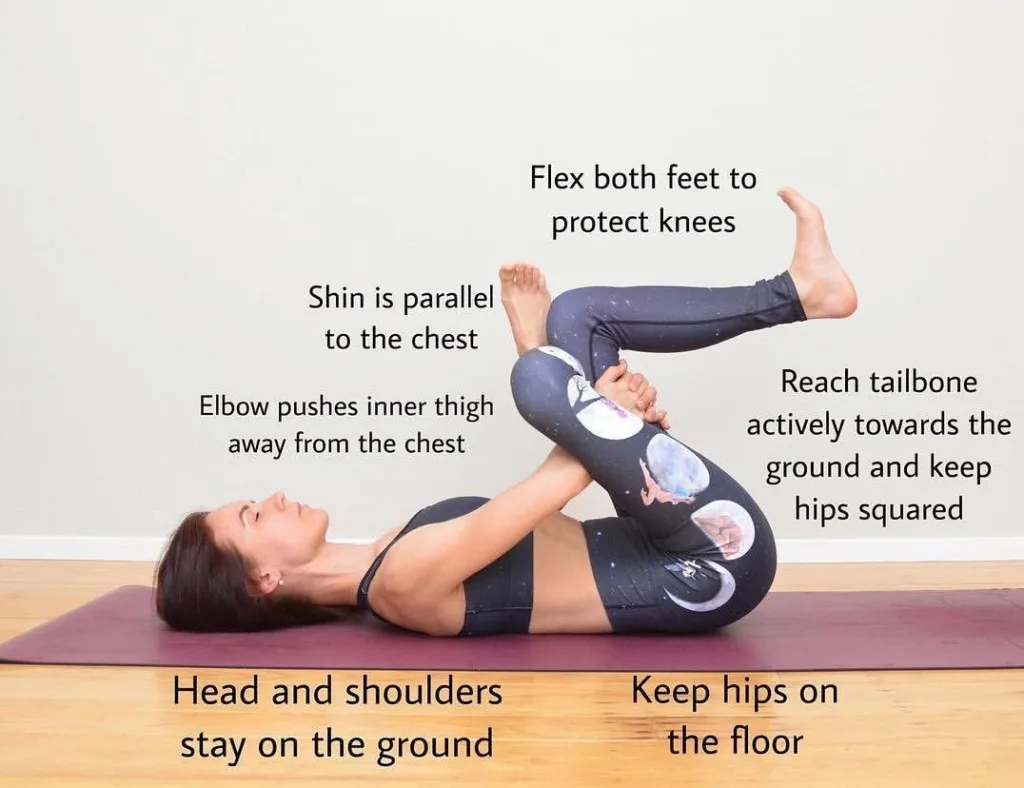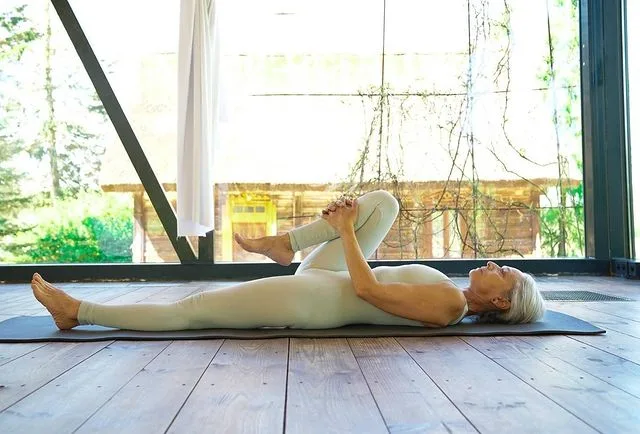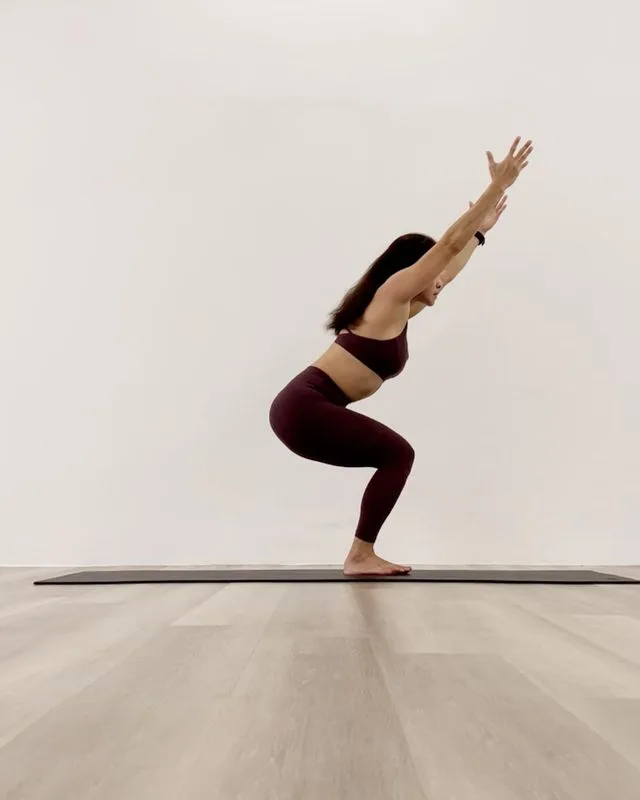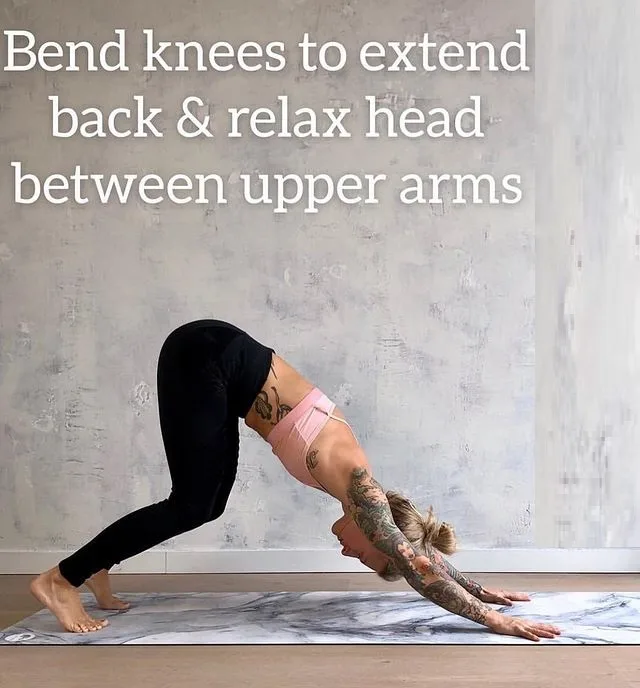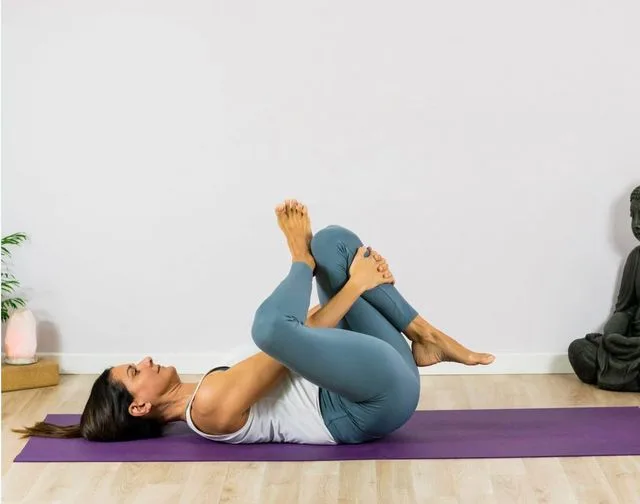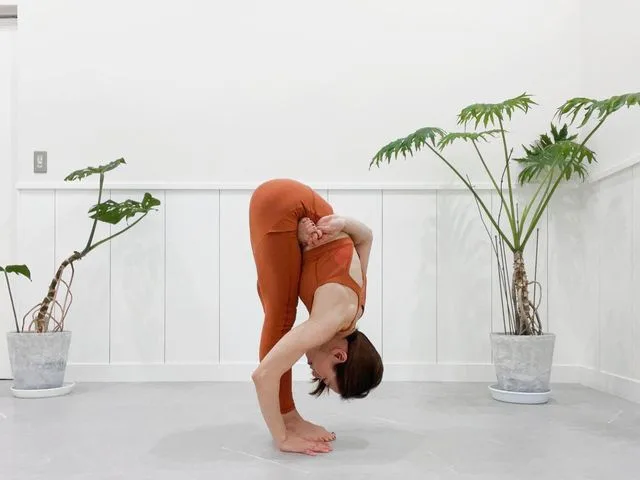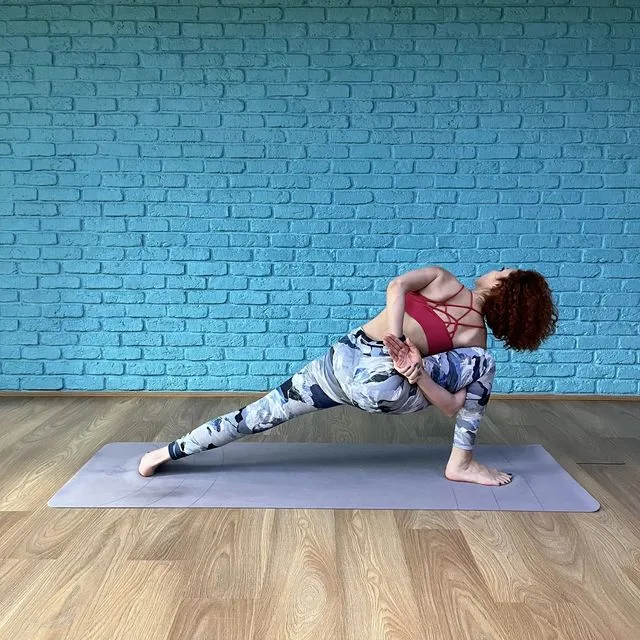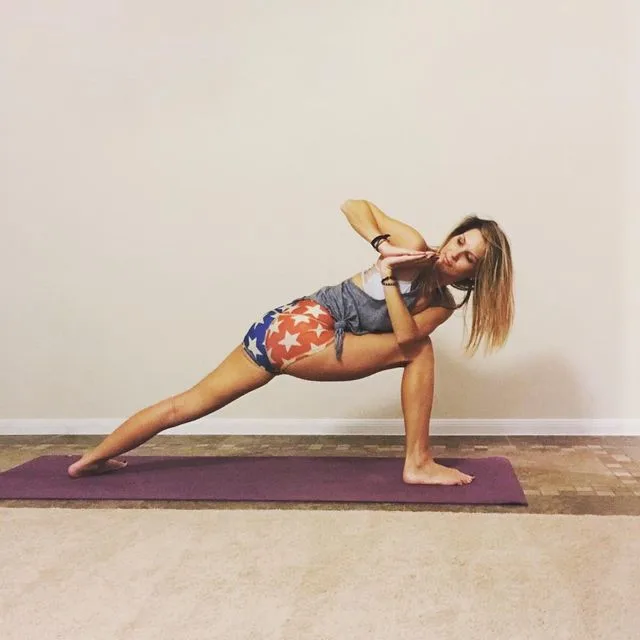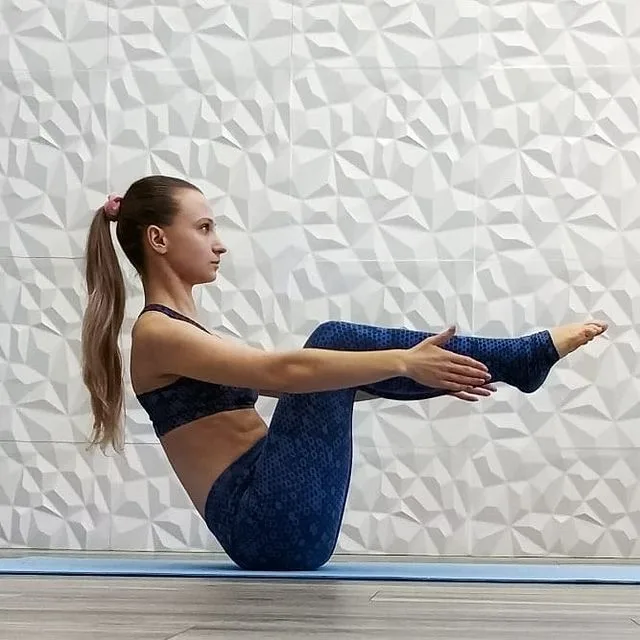The Virabhadrasana I (Warrior I pose) creates strength in your lower legs, hands, shoulders, and back muscles, while stretching your waist, abdomen, lungs, chest, shoulders, and neck.
This is a great warm-up before dealing with other poses involving backbends. The warrior is great for treating sciatica. It can be helpful to elevate your heel on a block to help beginners stay on the ground in this pose.
What is Virabhadrasana I (Warrior I)?
Virabhadrasana I is named after the fierce warrior, Virabhadra, who was created by the god Shiva.
The name “Virabhadrasana” is derived from the three Sanskrit words — Vira + Bhadra + Asana:
- “Vira” = “hero” or “warrior”
- “Bhadra” = “auspicious” or “blessed”
- “Asana” = “pose or posture”
Therefore, Virabhadrasana I can be translated to mean “Heroic Warrior Pose” or “Auspicious Warrior Pose”. The pose is said to embody the qualities of strength, power, and determination.
This asana is an extremely vigorous standing exercise that you need to focus on. It is a challenging asana that accomplishes a lot of multitasking. As you get into this position, many actions pull you in opposite directions. You lift yourself grounding, and when you reach backward you move.
Although this posture is a battle in itself, it is beneficial to master it. All your leg, core and arm muscles are strong and toned. Your chest expands, your lungs open, and you feel elated.
Since there are as many different actions as you do on posture, whenever you practice this asana, it is advisable to focus on one of them.
Practicing the Virabhadrasana I (Warrior I) will show you your strengths and weaknesses. This will allow you to accept the obstacles presented by your body, and over time, you will gain steady, conscious and sufficient skills to go deeper into this powerful posture.
Mythology
Virabhadra is a mythological character created by Lord Shiva and this mudra is its name from there. Veerabhadrasana I is an asana honoring the feats of a mythological warrior. Therefore, it is also called warrior I posture. This asana is considered one of the most beautiful asanas in yoga, and it adds a lot of beauty to the workout.
The story goes like this. There was a king named Daksha who did not invite his daughter Sati and her husband Shiva to the yagna (sacrifice ritual). She could not withstand insults and insults, so she set the venue on fire, and was burnt in the fire. When her husband arrives at the venue and finds his beloved wife dead, he is sad and angry. He took a strand of her hair and dropped it to the ground, raising a powerful warrior. He named this Warrior, or Virabhadra, or hero-friend, and sent him to destroy Daksha and all his guests in the yagna.
Virabhadrasana I (Warrior 1) is the first aspect of the arrival of Virabhadra, as he makes his way out from under the earth.
Information
| Known as: | Virabhadrasana I, Warrior I, Heroic Warrior Pose, Auspicious Warrior Pose |
| Sanskrit name: | वीरभद्रासन |
| IAST: | Vīrabhadrāsana |
| Pronounciation: | veer-ah-bah-DRAHS-anna I |
| Type: | Standing pose |
| Focus: | Lower Legs |
| Level: | Beginner |
| Total Time: | 30 to 60 seconds |
| Drishti: | Forward; Upward |
| Chakra: | Root Chakra (Muladhara) |
| Indications: | Circulation, respiration, sciatica |
| Counterposes: | Uttanasana (Standing Forward Fold), Adho Mukha Svanasana (Downward-Facing Dog), Balasana (Child’s Pose), Tadasana (Mountain Pose) |
| Preparatory Poses: | Downward Dog Pose, Cow Face Pose, Revolved side angle pose, Revolved triangle pose, Wide Stance Forward Bend, Reclined Hero Pose, Reclining bound angle pose, Reclining Hand to Big Toe pose, Wide-angle seated forward bend, Extended Side Angle Pose, Warrior II pose, Hero Pose, Tree pose |
| Follow-up pose: | Virabhadrasana II (Warrior II), Virabhadrasana III (Warrior III), Trikonasana (Triangle Pose), Ardha Chandrasana (Half Moon Pose), Utkatasana (Chair Pose) |
| Contraindications: | Modifications for shoulder injury, neck injury, high blood pressure, heart problems |
Benefits of Virabhadrasana I (Warrior I)
These are some of the amazing physical and mental benefits:
Physical Benefits:
- Increases muscular endurance
- Strengthens the arches, ankles, knees, and thighs
- Stretches the hips and shoulders
- Relieves symptoms of sciatica
- Stimulates digestion and circulation
- Broadens the chest
Mental Benefits:
- Develops willpower
- Builds focus
- Stimulates the mind
Steps of Virabhadrasana I (Warrior I)
- Start by standing in a mountain pose.
- Extend your right leg forward with a full, comfortable stride. Slightly twist the heel of your left foot so that the foot is outward at a slight angle.
- Keep your feet engaged, exhale and bend your right knee at 90 degrees. Place your hands on your hips and square them in the front. Adjust the distance between your legs as necessary so that your right calf is perpendicular to the floor when your right thigh is parallel to the floor. Inhale and place your hands above your head. Keep your arms straight by squeezing your triceps and lengthening them with your fingers. Keep your fingers open and pull the muscles down into the shoulder socket. Root your tailbone, extending from your pelvis under your feet. Extend from your pelvis through the crown of your head. Raise your right inner thigh as you fully engage the leg. Keep your right knee directly above your ankle.
- Hold for a 30-60 seconds. To release, move your feet off the floor, inhale, straighten your front leg, and come up to stand. Repeat on the other side.
Common mistakes
Concentrate on proper alignment and engage the muscles of the body to support the pose and avoid any injury. Here are the following four common mistakes in Virabhadrasana I (Warrior A Pose):
- Front knee collapsing inward: This can put undue stress on the knee joint and result in injury. To avoid this, make sure the front knee is in line with the ankle and press the knee outward, engaging the muscles of the outer thigh.
- Twisting of the hips to one side: This can strain the lower back and hips. To avoid this, keep the hips forward and engage the muscles of the inner thighs to help stabilize the pelvis.
- Raised or slumped shoulders: This can cause tension and strain in the neck and shoulders. To avoid this, draw the shoulder blades back and away from the ears, and lengthen through the spine to create space in the neck and shoulders.
- Low back stretch: This can cause compression in the lower spine and strain the muscles of the lower back. To avoid this, engage the core muscles and pull the tailbone down toward the floor, lengthening through the lower back.
Contraindications
Virabhadrasana I (Warrior I) is a very powerful standing balance posture under Hatha Yoga practice, there are some points to be kept in mind when practicing it, which is the first in the list of variations of the Warrior pose. These are explained below.
Injuries to the knees or hips:
While this posture definitely improves the strength and flexibility of the hips and knees, the pressure around this space during the practice of this posture allows the tissues around the hips and knees Can make It is best to avoid this posture if someone is injured and therefore tear.
Suffering from low or high blood pressure:
Understanding the body with the practice of Veerabhadrasana is as important as gaining flexibility. While the arms extend above your head and gaze upward, if no one is aware of the body, there is a tendency to tighten the breath. Breathing or withholding of breath can be against blood pressure patients and therefore it is best to seek guidance or avoid the practice of this posture.
Balance plays a great role:
In Virabhadrasana I (Warrior I), practice is required even when being aware of the body apart from the feet and therefore slowing down for someone who has a headache or problems related to body balance needed. Individual can also practice it with support first or begin by looking forward and upward, understanding the balance of the body. Using a wall can also be a good option.



